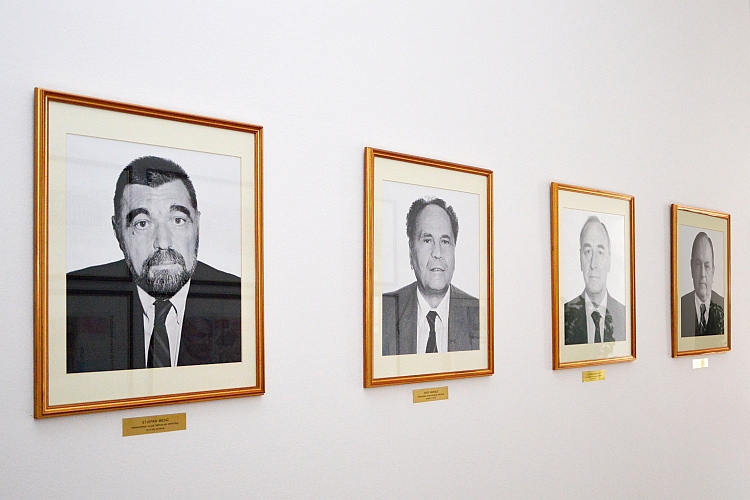Previous Governments

The first Croatian Government, led by Stipe Mesić (then HDZ), began the process of transition from a socialist to a democratic multiparty system, and from a planned to a market economy.
The second Government, led by Josip Manolić (then HDZ), adopted the new Constitution of the RC, declared independence and was faced with the armed rebellion of some Croatian citizens of Serbian nationality, and open aggression by the Yugoslav National Army.
The third Croatian Government was the Government of National Unity, under the leadership of Franjo Gregurić, formed under wartime conditions from representatives of all parliamentary parties and experts. It organised defence, cared for displaced persons, established monetary independence and won international recognition for Croatia.
The fourth Croatian Government, led by Hrvoje Šarinić (HDZ), brought in a new system of local and regional self-government and began work on privatisation.
The fifth Government, led by Prime Minister Nikica Valentić (HDZ), conducted the Stabilisation Programme which halted hyperinflation and introduced the kuna as the new national currency. In its term of office, the military and police liberation campaigns Flash and Storm were undertaken, whereby most of the occupied territory of Croatia was liberated.
The sixth Croatian Government was formed after early elections in 1995, and Zlatko Mateša (HDZ) became the new Prime Minister. The Government began the peaceful reintegration of Eastern Croatia, introduced VAT, continued with reconstruction and privatisation, and Croatia joined the Council of Europe.
The seventh Croatian Government was formed in 2000 by a coalition of SDP and HSLS together with HSS, HNS, IDS and LS, led by Ivica Račan (SDP). In its term of office, to replace the semi-presidential system, a parliamentary system was introduced, and Croatia emerged from a form of international isolation. The Government concluded an agreement with the IMF and began unpopular reforms.
After two parties (HSLS and IDS) left the governing coalition, Parliament passed a vote of confidence in the eighth Croatian Government, still led by Ivica Račan. By the end of its term of office, it had reduced illiquidity, launched economic growth, began and almost completed work on building the Zagreb-Split motorway, signed the Stabilisation and Association Agreement with the European Union, and submitted an application for membership of the European Union.
The ninth Croatian Government was formed at the end of 2003, which was also a coalition (HDZ, HSLS, HSU, DC and national minorities), with Ivo Sanader (HDZ) as Prime Minister. The Government improved cooperation with the Hague Tribunal, speeded up the return of refugee Croatian citizens of Serbian nationality, reduced unemployment, and during its term Croatia was given the status of candidate country and began negotiations with the EU (2005).
The tenth Croatian Government was also led by Ivo Sanader, and it was formed by a coalition of HDZ, HSS, HSLS and HSU, and representatives of minorities. Croatia joined NATO in 2009, and in the same year Ivo Sanader resigned.
Jadranka Kosor (HDZ) became the Prime Minister and she led the eleventh Croatian Government until the end of 2011. Due to the economic crisis her Government introduced the crisis tax, increased VAT and adopted a Programme for Economic Recovery, but also launched the fight against corruption. The Government of Jadranka Kosor concluded an agreement with Slovenia on arbitration and thereby ensured the continuation and conclusion of negotiations with the EU. At the end of her term, the accession agreement was signed between Croatia and the EU.
The coalition Government of Zoran Milanović (SDP, HNS, IDS and HSU) was the twelfth Croatian Government so far, and he was the tenth Croatian Prime Minister. During the term of the current Government, Croatia became a full member of the EU.
The Reform Government (Domestic Coalition and Bridge) was the thirteenth Croatian Government, and Tihomir Oreskovic was the eleventh Croatian Prime Minister.